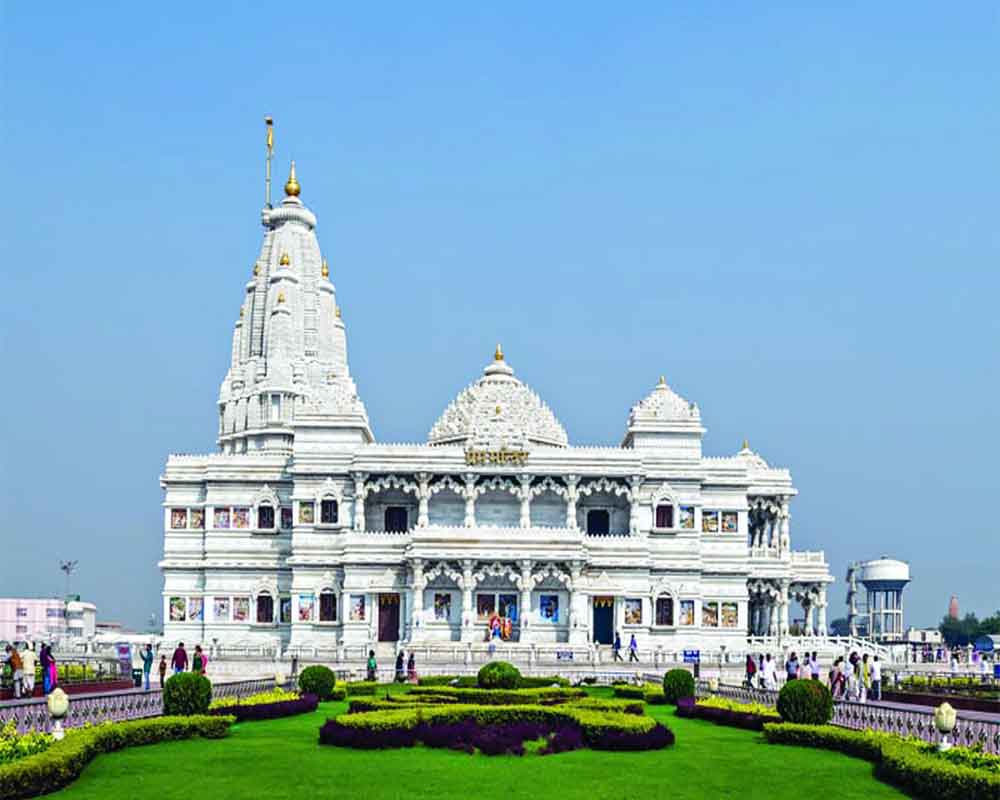There are several mentions in historical recordings and scholarly papers to show that pre-Islamic religious edifices were razed to build mosques
There is no doubt that Hindus have had the image of being soft and, therefore, a useful punching bag. It was overdue for a firm stand to be taken as was rightly done by TS Tirumurti, the Indian permanent representative to the United Nations, very recently. Swami Vivekananda was palpably aware of the Hindu image having been tarnished and there being a Hindu phobia. Accorded a tumultuous welcome upon his return after making a great name for himself and his faith overseas, Swamiji gave a frank explanation for why there was Hindu phobia.
Sir Sankaran Nair, a member of the Viceroy’s Council, in his book called Gandhi and Anarchy (published by Tagore & Company; Madras, 1922), wrote: “For sheer brutality on women, I do not remember anything in history to match the Malabar rebellion. It broke out about the 20th of August (1921). Even by the 6th of September, the results were dreadful.” Gandhiji’s comment which he wrote in Young India of September 29, 1921: “We have forgotten the divine out of dying for our faiths without retaliation… The Hindus must have the courage and the faith to feel that they can protect their religion in spite of such fanatical eruptions.” He warned the Government against excessive repression of the Moplahs. The ending of the revolt was a matter not only of urgency, but of simple humanity: “Be the Moplahs ever so bad, they deserve to be treated as human beings.”
Amongst Swami Dayanand’ successors, Swami Shraddhananda was the most successful in implementing shuddhi. He was murdered in his sick bed. Gandhi’s comment was: “I have called Abdul Rashid a brother and I repeat it. I do not even regard him as guilty of Swami’s murder. Guilty indeed are those who excited feelings of hatred against one another.”
The message of Vivekananda was clear that many problems have their roots in us. There is no power in the universe to injure us unless we first injure ourselves. One-fifth of the population in India has become Mohammedan. Whose fault is it? One of our historians says in ever-memorable language: “Why should these poor wretches starve and die of thirst when the perennial fountain of life is flowing by? The question is: What did we do for these people who forsook their own religion? Why should they have become Mohammedan?”
To go back to Aurangzeb, over two centuries after the desecration, F Growse, the magistrate of the district in the 1870s, felt that of all the sacred places in India, none enjoys greater popularity than the capital of Braj, the holy city of Mathura. For nine months in the year, festival follows upon festival in rapid succession and the ghats and temples are daily thronged by new troops of way-worn pilgrims. So great is the sanctity of the spot that its panegyrists do not hesitate to declare that a single day spent in Mathura is more meritorious than a lifetime passed in Benares. All this celebrity is due to the fact of it being the birthplace of lord Krishna.
In his Mathura: A District Memoir, Growse has recorded his exhaustive survey of Brajbhoomi. He was so overwhelmed by the vandalism that visited the area repeatedly that he wrote feelingly, although his home was in faraway England. To quote: “Thanks to Muhammadan intolerance, there is not a single building of any antiquity either in the city itself or its environs. Its most famous temple, which was dedicated to Kesava Deva (Krishna), was destroyed in 1669, the 11th year of the reign of the iconoclast Aurangzeb. The mosque (idgah) erected on its ruins is a building of little architectural value.”
Today, Balkrishna is worshipped in a little room which appears like a servant quarter adjoining the back of the idgah. Pathos can be experienced by any visitor, whether a devotee or otherwise. The mischief with masjids extends from Somnath in the west to Adina mosque on the Bangladesh border in the east. The Adina mosque is situated on National Hiighway No.34 near Gaur. On the wall outside, distinct remnants of Hindu deities are visible. One stone slab displays Ganesh by the side of his consort. Inside the mosque, the stone work is equally convincing that the original building was a temple. There has obviously been done a fair amount of work on this place of worship. Memoirs of Gaur and Pandua by M Abid Ali Khan, subsequently revised by HP Stapleton, prove this.
A more recent work of scholarship is entitled Mosque Architecture of Pre-Mughal Bengal by Dr Syed Mahmudul Hasan. Evidently, local legend as to who built the Adina mosque and why, appears to be incorrect. According to scholars, it was established by Sultan Sikandar Shah between 1366 and 1374 AD. There is a difference of opinion, especially between JH Ravenshaw and other scholars as to whether Gaur, the famous capital of medieval Bengal, was older or whether Hazrat Pandua, where Adina is located, flourished earlier. The significance of the controversy is about how much rubble from pre-Islamic edifices could have been used. Dr Hasan is impartial enough to quote various scholars at length, although he betrays some unhappiness at the allegation about the use of Hindu materials.
(The writer is a well-known columnist, an author and a former member of the Rajya Sabha. The views expressed are personal.)


























